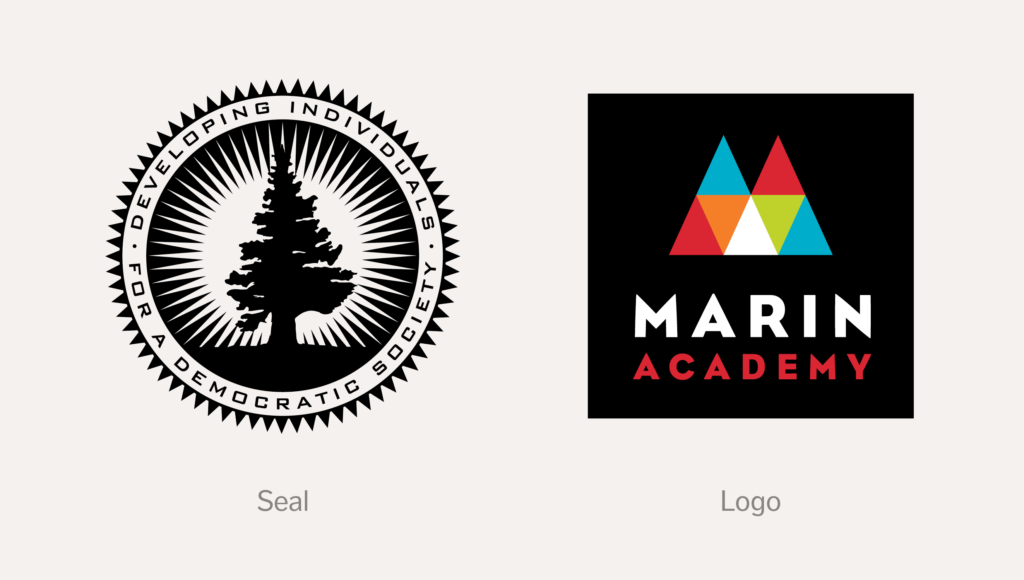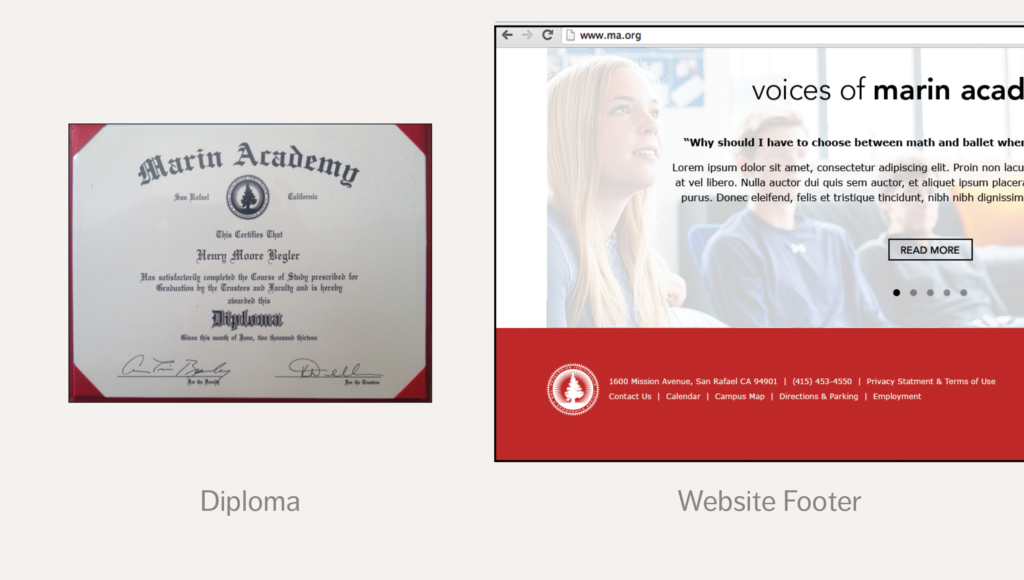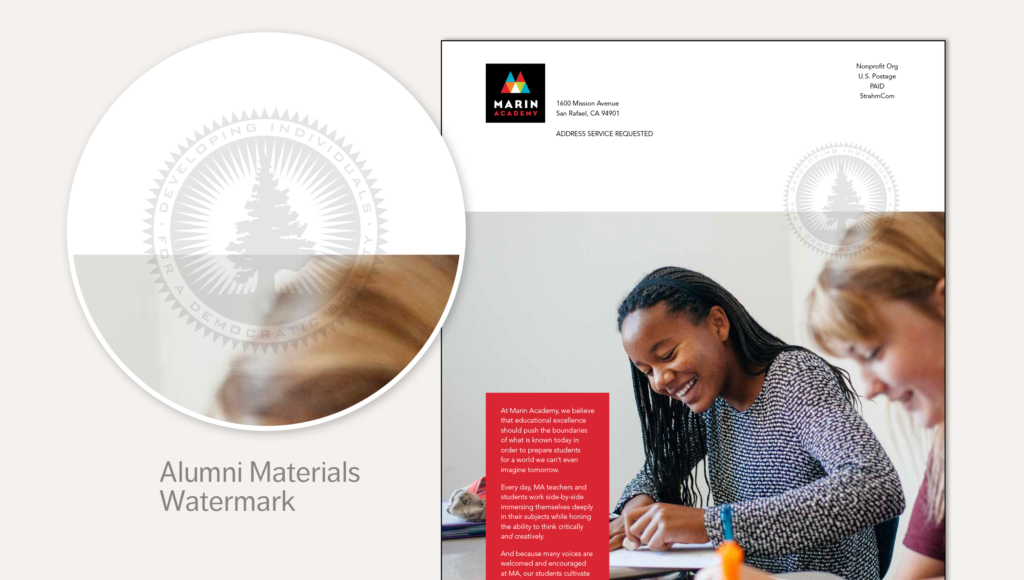Your Logo and Your Seal. What’s the Difference?
Posted by Rod Lemaire on November 18th, 2020
Posted in Blog, Independent Schools, Nonprofit Design

If your organization has an historical seal currently used as your logo, it may be time to replace that with a fresh visual identity that includes a new logo.
If you worry you’ll never be able to have a more modern look because the seal is beloved by an important group of stakeholders, is a symbol of your organization’s tradition, or just feels untouchable, there is hope.
Many of our clients come to us with just this challenge: a seal packed with emotional meaning for some, but a real need for a new logo and visual identity to better tell the story of the organization as it is today.
Think of it this way: a seal looks backward while a new logo looks forward.

The seal indicates something about your founding values, your authenticity, and perhaps the prestige or officialness of your organization. It’s often a signal of authenticity, and may have been designed at a time when visual communications were very different. Seals were literally made of wax and clay and were meant to reflect the validity of documents and organizations.
But as design and communications needs evolved, as well as the way organizations promoted themselves (think engraving a logo into a piece of handmade furniture in 1920 vs. advertising a furniture company on television in 1965), the logo began to emerge as a way to signal not the authenticity of an organization, but what it aspires to be.
And that’s still true today. Logos are a shortcut that represent an organization’s promise to its stakeholders. The best logos, wrapped up in a unifying brand strategy and surrounded by cohesive messaging, signify a big, exciting, and differentiated idea that people want to be part of. Logos are a vessel into which you can pour meaning, whereas seals have a default meaning.
“But our alumni would freak out if we changed our seal logo to something more modern.” We hear this a lot along with, “We’re an organization based on a religious order so we certainly can’t change the crest that’s been used for 300 years.”
It’s true. If you have a seal and it’s important to anyone important to your organization, you can’t and should not get rid of it. Instead, the solution is to create a modern visual identity that reflects the aspirations of your organization and audience, while also giving a place of honor to your historical seal.

Appropriate uses for your seal might be anything that reinforces your legacy or longevity. These may include legal documents, diplomas, notes of commendation, and communications with alumni groups. Rules for your seal should be developed that allow for it to remain an august emblem, perhaps only used by your president’s office, on official letterhead, association membership documents, and the like. The seal is a connection to your organization’s past, so using it strategically will preserve its prestige.

And now you’re free to create the new logo and visual identity that tells a unique story about your organization and where you’re heading. It will be more flexible and open, reflecting who you are now, not who you were.
In the past your organization needed a seal on your product and business cards, and your office door was probably emblazoned with your logo too. Now what’s most important is your social media avatar and the signature on your e-newsletter. The uses have evolved and so too should these symbols.
If it’s time to create a powerful new visual identity that’s flexible and inviting, you can move forward with confidence knowing that you can also give your historical seal the place of honor it deserves.

Reach out to us to learn how we can support your next visual identity project!
Rod Lemaire is a Mission Minded Partner and Creative Director, overseeing our award-winning design studio. Rod delivers more than a decade of art direction and communication design expertise for mission-driven organizations.
See all posts by Rod Lemaire